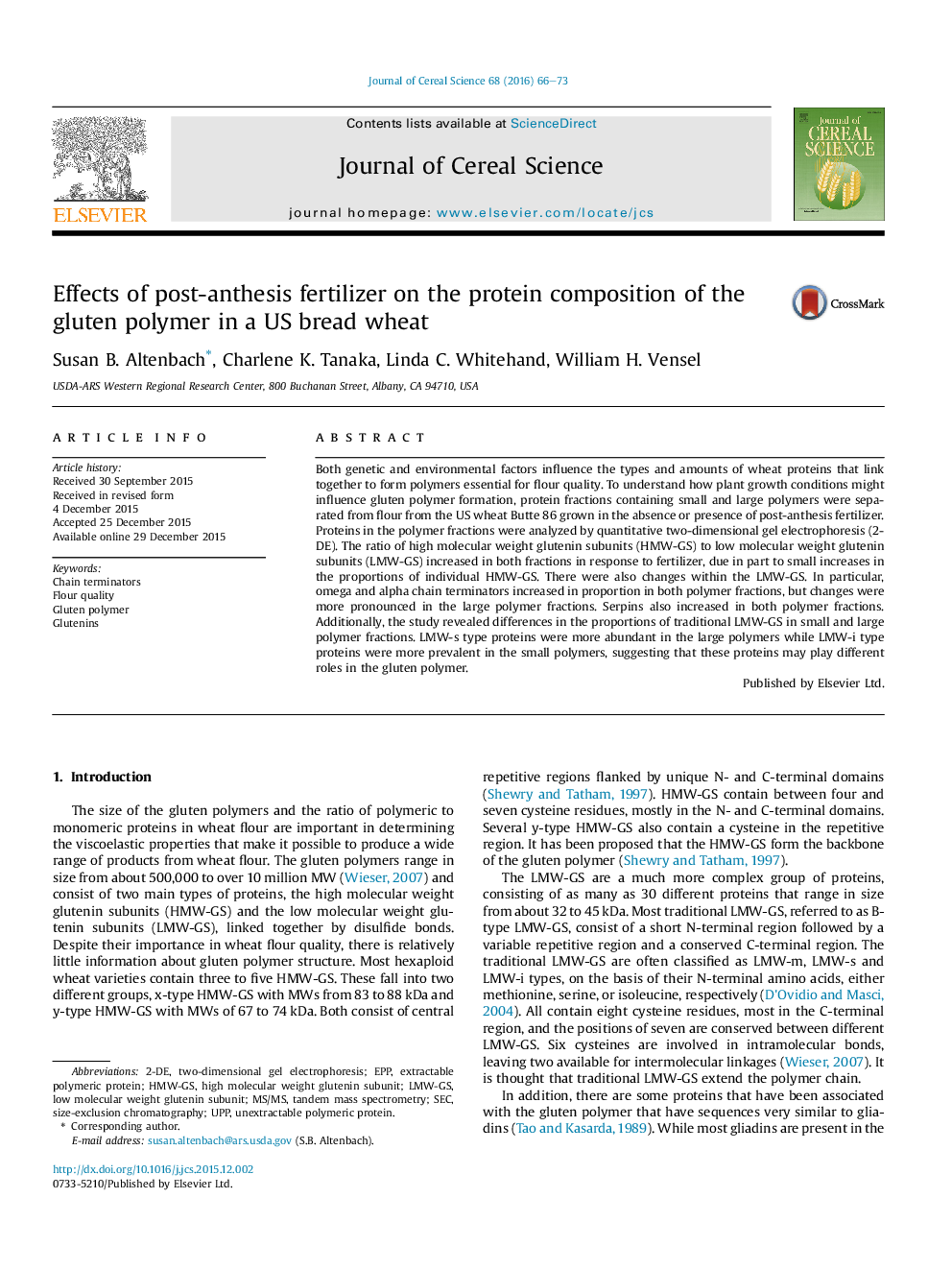| Article ID | Journal | Published Year | Pages | File Type |
|---|---|---|---|---|
| 6377701 | Journal of Cereal Science | 2016 | 8 Pages |
Abstract
Both genetic and environmental factors influence the types and amounts of wheat proteins that link together to form polymers essential for flour quality. To understand how plant growth conditions might influence gluten polymer formation, protein fractions containing small and large polymers were separated from flour from the US wheat Butte 86 grown in the absence or presence of post-anthesis fertilizer. Proteins in the polymer fractions were analyzed by quantitative two-dimensional gel electrophoresis (2-DE). The ratio of high molecular weight glutenin subunits (HMW-GS) to low molecular weight glutenin subunits (LMW-GS) increased in both fractions in response to fertilizer, due in part to small increases in the proportions of individual HMW-GS. There were also changes within the LMW-GS. In particular, omega and alpha chain terminators increased in proportion in both polymer fractions, but changes were more pronounced in the large polymer fractions. Serpins also increased in both polymer fractions. Additionally, the study revealed differences in the proportions of traditional LMW-GS in small and large polymer fractions. LMW-s type proteins were more abundant in the large polymers while LMW-i type proteins were more prevalent in the small polymers, suggesting that these proteins may play different roles in the gluten polymer.
Keywords
Related Topics
Life Sciences
Agricultural and Biological Sciences
Agronomy and Crop Science
Authors
Susan B. Altenbach, Charlene K. Tanaka, Linda C. Whitehand, William H. Vensel,
